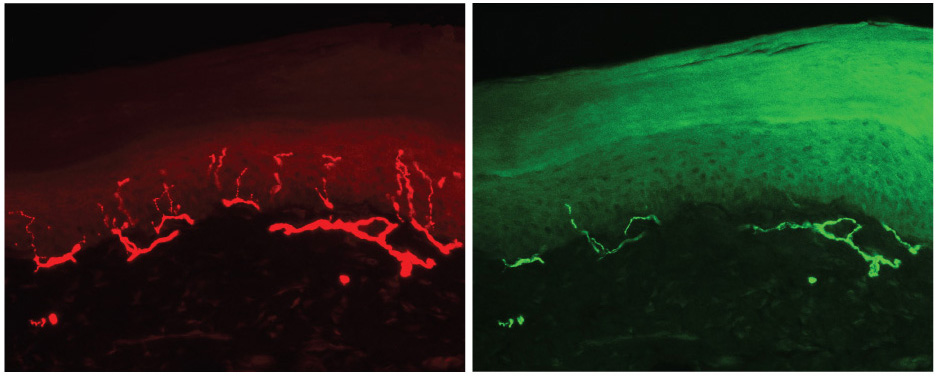
Rat study ties Rett syndrome gene to pain processing
Mutations in MECP2, the gene mutated in Rett syndrome, may alter the proportions and activity of sensory neurons in rats.
Mutations in MECP2, the gene mutated in Rett syndrome, alter the proportions and activity of sensory neurons, a new study in rats suggests1.
The findings may help explain why people with Rett syndrome are unusually sensitive to pressure and cold, but insensitive to heat.
“It seems like it is a mixed bag that in some cases, there may be increased sensitivity to some modalities of stimuli, whereas other stimuli, there might be some degree of tolerance,” says lead researcher Peter Smith, professor of molecular and integrative physiology at the University of Kansas in Kansas City.
Rett syndrome almost exclusively affects girls because mutations in MECP2 tend to be lethal in boys. Girls with the condition develop typically for the first 6 to 18 months and then lose skills, such as the ability to communicate.
Some girls with Rett syndrome are sensitive to touch, and yet seem to have a high tolerance for pain. But little is known about the biological basis of these altered sensitivities.
The new work suggests that mutations in MECP2 alter the perception of touch and temperature by shifting the numbers and properties of sensory neurons.
“It’s an interesting paper, and it is exploring an interesting aspect of clinical problems that exist in Rett syndrome,” says Jeffrey Neul, professor of pediatrics at Vanderbilt University Medical Center in Nashville, Tennessee, who was not involved in the study.
Touch test:
Smith and his colleagues studied male rats with a mutation in one copy of MECP2. They used a device called an analgesiometer to apply pressure to each rat’s paw, and measured how quickly the animals withdraw as the pressure becomes painful. They also placed the animals on plates that become uncomfortably cold or hot and measured how quickly the animals step off them.
Rats with mutant MECP2 withdraw their paws at lower pressures than control rats do. But their reactions to temperature are mixed: They are quicker than controls to leave the plate as it cools, but slower to respond as it warms.
The researchers analyzed skin from the rats’ paws under a microscope, using a stain to mark neurons. Sensory neurons are more numerous in the Rett rats than in controls, they found. In particular, the mutant rats have many more neurons that sense pressure, and slightly fewer that detect temperature.
The researchers were able to reproduce this distribution of cells in control rats by injecting their paws with snippets of RNA that block MECP2 expression. This suggests that MECP2 governs the number and type of the neurons.
Sensory neurons in the mutant rats also have unusually long projections, called axons.
Sensory surprise:
The researchers also analyzed patterns of gene expression in the sensory neurons. They found 1,347 genes whose expression is significantly higher or lower in sensory neurons from the Rett rats than in neurons from controls.
Many of the genes are involved in axon growth or in the building of the cells’ structural scaffold, or cytoskeleton. Greater expression of cytoskeleton genes may stiffen cells, making them unusually responsive to pressure, the researchers say.
The team used RNA to block the expression of eight genes with unusual expression patterns in the Rett rats. This normalizes axon outgrowth in cultured sensory neurons from the rats. Blocking those genes in the rats also normalizes the animals’ sensitivity to touch.
“It’s nice that they had specific gene targets that they went after, and they tried to rescue the phenotype as well,” says Maria Chahrour, assistant professor at the University of Texas Southwestern Medical Center, who was not involved in the study.
Chahrour says the researchers should also explore sensory sensitivities in female Rett rats, which tend to have milder features than males.
Smith says his team is finishing up experiments with female rats. Their ultimate aim, he says, is to find ways to ease sensory sensitivities in girls with Rett syndrome.
References:
- Bhattacherjee A. et al. Proc. Natl. Acad. Sci. USA 114, E6952-6961 (2017) PubMed
Recommended reading

New organoid atlas unveils four neurodevelopmental signatures

Glutamate receptors, mRNA transcripts and SYNGAP1; and more

Among brain changes studied in autism, spotlight shifts to subcortex
Explore more from The Transmitter

Not playing around: Why neuroscience needs toy models
